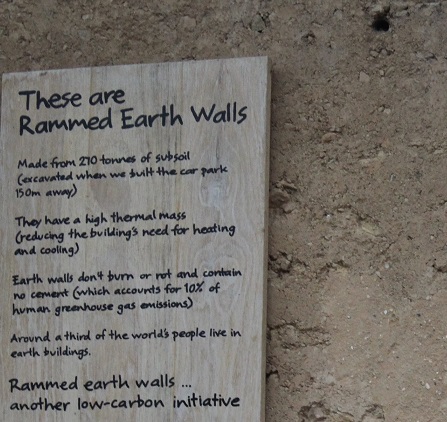Learn why and how homes, offices and work spaces can make you sick
 When you understand what this course can teach you, you will understand how appropriate building decisions can help people to lead healthier lives.
When you understand what this course can teach you, you will understand how appropriate building decisions can help people to lead healthier lives.
- Our health is affected by the buildings in which we live, study and work.
- This course is a flexible distance learning course that helps you to learn more about the design and construction of healthy buildings.
- Learn more about building design.
- Study psychological factors in building design and construction.
- Study improving home habitability.
- Learn more on healthy construction techniques, electrical wiring, healthy building materials, healthy construction techniques.
- Understand the importance of light and temperature control within the home and workplace.
- Study healthy plumbing and ventilation.
- Increase your knowledge of ergonomics.
Living and working in a healthy building can improve a person's health, mental health, motivation and work ethic!
If you want to improve your own home or the place where you work or run your own business, then this is the course for you.
COURSE STRUCTURE
There are 10 lessons in this course:
- Introduction To Building Biology
- Scope and Nature of Building Biology
- Building Diseases -Chemical, Electrical, Cage, Location
- Environmental Law
- Biological Damage to Buildings
- Environmental Considerations
- Clean Interiors
- Building Materials
- Introduction
- Dangerous Building Materials
- Chemical Effects on the Human Body
- Timber
- Formaldahyde Adhesives
- Plastics
- Masonary and Concrete
- Insulation Materials
- Soft Furnishings
- Paints
- Timber Treatments, stains, polishes, etc
- Construction
- Roofing Materials
- Roof Gardens
- Roof Construction
- Floors
- Reasons to Choose Different Floors or Floor Coverings
- Pests in Buildings
- Dust Mites
- Fleas
- Ants
- Termites, Flies, Mosquitoes, Wasps, Cockroaches, etc
- Spiders
- Rodents, Birds, Snakes, etc
- Services
- Electricity
- Electrical Fields
- Circuits
- Measuring Electricity and Exposure limits
- Terminology
- Power Supply Systems
- General Waste Disposal
- Waste Water
- Temperature
- Introduction to Heating and Cooling
- Principles of Temperature Control
- Heat Loss
- Types of Heaters
- Cooling Effects
- Air Cleaners, Filtration, Circulation, Air Conditioning
- Energy Conservation
- Solar House Design
- Active and Passive Solar Heating Systems
- The Internal Environment: Ventilation
- Scope and Nature
- Natural Ventilation
- Mechanical Ventilation
- Air Conditioning
- Humidity Management
- Light
- Internal Light in Buildings
- Natural Light
- Artificial Light
- Electric Light
- Acoustics
- Internal Acoustic Control
- Improving Internal acoustics
- Noise Insulation
- Ergonomic Considerations
- Scope and Nature of Ergonomics
- Form, Shape and Spatial Dimensions
- Furniture Design
- Interior Layout
- Psychological Considerations
- Scope and Nature
- Physical and Psychological Affects of Colour
- Stressful or Calming Environments
- General Principles for Interior Design
Each lesson culminates in an assignment which is submitted to the school, marked by the school's tutors and returned to you with any relevant suggestions, comments, and if necessary, extra reading.
AIMS:
- Explain the concept of healthy buildings including its relevance to human health.
- Select building materials which are safe to human health.
- Evaluate the health impact of different building techniques, including construction and design.
- Explain how the way in which services are installed, can impact upon the health of people using a building.
- Explain how building design can impact upon the quality of the physical environment inside.
- Explain ergonomic considerations in building design.
- Explain psychological considerations in building design.

WHAT THE COURSE COVERS
- Explain the concept of building biology, in accordance with the international building biology institute.
- Explain the history of building biology institutes, in Germany, America, and New Zealand; with relevance to Australia.
- Explain the current status of bio-harmonic architectural practices in Australia.
- Assess in a summary for each, problems with different dangerous building materials including: *Asbestos *Plastics *Insulation materials *Treated pine.
- Compare characteristics of different commonly used building materials, including: *Rate of deterioration *Thermal qualities *Chemical properties *Acoustic qualities *Dust collection/repellence *Light reflection.
- Develop a checklist, for evaluating the health impact of different building materials.
- Evaluate the impact of different building materials on health, in a building inspected by the learner.
- Develop a checklist of building design factors, to assess the effect of design on human health.
- Develop a checklist of building construction factors (other than materials) which may impact upon human health.
- Explain how design can impact upon different aspects of the internal environment, including: *Thermal comfort *Light intensity *Humidity *Condensation *Acoustics *Control of pests *Noise insulation.
- Compare the impact of building techniques, including construction and design, upon human health, in two different specific buildings studied by the learner.
- Explain the impact of electric fields on human health in a building inspected by the learner.
- Explain how electrical fields can be minimised by the way in which electric wires are laid in a specific house plan analysed by the learner.
- Compare differences upon the impact on health from different power supplies including: *Mains power *Self generated systems *Different voltages.
- Compare the potential impact on health, of different waste disposal systems including: *Chemical treatments *Reed beds *Settling ponds *Combustion systems *Land fill.
- Explain potential impact of different water supply systems on human health, including: *Mains water *Ground water *Different types of rain water tanks.
- Explain possible impacts of gas supply systems on human health including: *Mains gas *Bottle gas *Self generated bio gas.
- Compare the impact of different types of artificial light sources on human health, including: *Electric light *Combustion systems.
- Compare the impact of different types of heating systems on human health.
- List ways temperature can be controlled inside a building by design.
- Explain health impacts of air conditioning in a building studied by the learner.
- List ways acoustics can be controlled, by building design.
- List ways light can be controlled, through building design.
- List ways ventilation can be controlled, by building design.
- Explain solar energy applications in a specified building.
- Evaluate the impact of the design of a building visited by the learner, on the interior environment.
- Redesign a building from a specified building plan, to improve the quality of the physical environment inside.
- Evaluate the heights of three different kitchen benches for ergonomic suitability to the people who are primary users of those benches.
- Explain the importance of clear and easy access into and through the building for all users, including the disabled.
- Explain health aspects of the relationship between the human body and the interior of a specific building.
- Explain the effect that four different colours may have on human health.
- Explain the effect of space perceptions may have on human health, in a visited interior workplace.
- Evaluate the psychological impact of the interior environment in two distinctly different offices upon the people who work in each of those offices

Why study this course?
- It is important to live in buildings that are optimally designed for our health.
- This course will be of interest to architects, builders, designers, interior designers and anyone who wants to develop and design their own home for optimal family living.
- It is also important for anyone who runs their own business or manages staff to ensure that their office/work space is design to optimal healthy building standards.
- The course will take you through building factors, building construction, building design and the psychological impact on the home interior.
- The course doesn't just focus on the home, it also looks at the development and design of offices and work spaces to ensure an optimal working environment.
- Many of us spend many hours in our working space today and an optimal, healthy working environment is essential for well motivated and healthy staff to achieve the best performance levels.